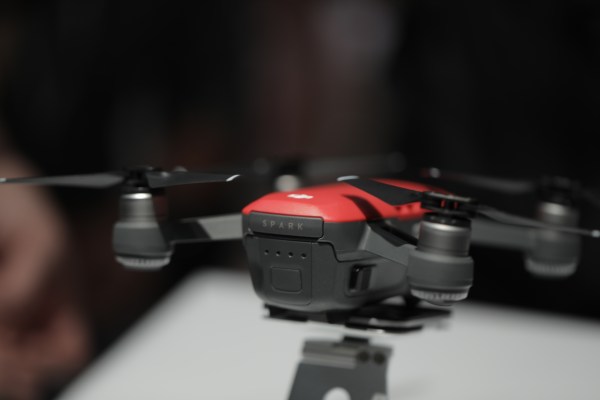Write about technology for any amount of time and you’ll get run through the hype wringer. It’s impossible to avoid. After all, it’s the excitement of new technologies that drew so many of us to this field in the first place. And when DJI debuts a product like the Spark, the word “game changer” gets tossed around a lot, just like it did with last year’s Mavic Pro.
But disruption takes time. Even at the breakneck speed of technology, change rarely happens overnight. In hindsight, it’s easy to pinpoint the mainstreaming of a technology on a single event, like the launch of the first iPhone. But that short-term memory wipes away a lot of the preamble and ramp up. In hindsight, it’s easy to forget, say, how much of a struggle the earliest Android phones had.
The word “mainstreaming” has been tossed around among those who follow the drone world. Here’s a CNN story from 2013 titled “Drones go mainstream.” And here’s Slate with “2015 Was the Year of the Drone.” And of course, one for the Mavic Pro from last year titled, “You Know Drones Have Gone Mainstream When Even Martha Stewart Loves Her Mavic.”
Sure, Martha is less known for her technical prowess than her homemaking, but being a millionaire TV star who gets stuff for free probably doesn’t quite qualify one as “mainstream.”
I’ll admit that I find myself being a bit more cynical about all of this based on recent experiences. For whatever reason, I find myself talking a lot to 3D printing companies these days. Promises of future successes are inevitably tempered with something approaching apology for the hype. The industry has never stopped growing, year over year.
But in the eyes of much of the public, it’s been an abject failure. The promise of a 3D printer in every home has been all but abandoned. It’s become a yardstick for hype and failed promises. It’s invoked regularly when talking about technologies like drones and virtual reality. And if nothing else, it’s a good object lesson in how a category’s hype cycle can be a big setup for failure.
Like industrial 3D printing, industrial drones are sticking around. Along with other technologies like robotics and automation, they have already proven invaluable for what the manufacturing world calls “the three Ds” — jobs that are dirty, dull and dangerous. I recently spoke to GE VP Colin Parris about the use of drones to survey flare stacks used in drilling operations in the Bering Sea. Drones replace the need for workers with mountain climbing skills and really good life insurance plans.
But industrial uses don’t always lead to mainstream acceptance, as we learned from 3D printing. Most consumer drones are prohibitively expensive for mainstream users. And the ones that aren’t are often a pretty crappy experience, not too far removed from the bad shopping mall kiosk helicopters that were good for about two flights. And like low-end VR offerings, having a bad, cheap first experience could be enough to put many users off the tech.
Of course, the drone/3D printing comparison isn’t an exact one-to-one. For one thing, the joys of drone flying will be immediate for many. And for another, while many drones take time to master, it’s not exactly on the same level as learning to create a complicated 3D model as is often mandatory in 3D printing.
And drones come with their own growing issues, including privacy and safety concerns that have led to increased scrutiny from the Federal Aviation Administration, among others. Trying to figure out precisely how legal it is to fly a drone around your neighborhood is pretty tricky — and from the looks of it, things don’t seem to be getting much easier, even after you go through what may or may not be an optional registration processing, pending appeal.
Still, with every subsequent generation, the category is more accessible. And photography and video will almost certainly be a large part of their path toward a more mainstream acceptance — that and the sheer fun of flying them around. But even with the far more affordable $499 price point on the Spark, the price is still too high for true mainstream adoption.
That doesn’t mean the space won’t get there. It’s just another reminder that mainstreaming doesn’t happen overnight.
